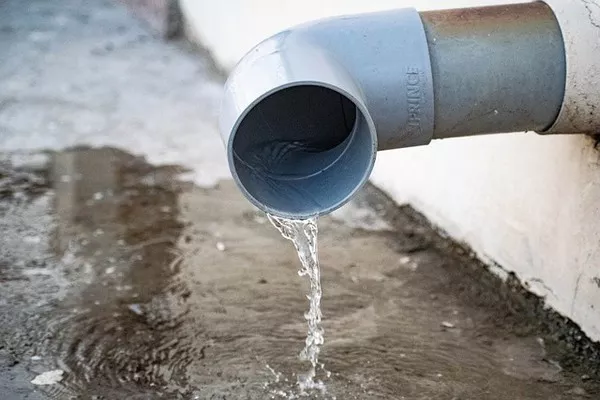Sewage treatment plants play a crucial role in maintaining public health and protecting the environment by effectively managing and treating wastewater. As our urban centers continue to grow and the demands on our water resources increase, understanding what sewage treatment plants do with waste becomes ever more important. This article explores the essential functions and processes of sewage treatment plants, shedding light on how they manage and dispose of the waste generated from our homes and industries.
The Challenge of Wastewater Management
Wastewater, often referred to as sewage, is a complex mixture of domestic, industrial, and commercial liquid waste that flows through our urban and suburban drainage systems. This wastewater contains contaminants, pollutants, and pathogens that, if not treated properly, can pose significant risks to public health and the environment.
Sewage treatment plants are essential components of modern urban infrastructure, designed to address the challenges posed by wastewater management. Their primary objective is to remove harmful pollutants, clarify the water, and ultimately release treated water back into the environment. Simultaneously, they need to deal with the solid waste that accumulates during the treatment process.
The Core Processes of Sewage Treatment
Sewage treatment plants employ a series of physical, chemical, and biological processes to treat wastewater effectively. These processes are designed to remove impurities and ensure the resulting effluent meets regulatory standards before it is safely discharged. The core processes typically include:
Screening: The first step in wastewater treatment involves the removal of large debris, such as sticks, leaves, and plastic, through mechanical screening. This helps protect downstream equipment and ensures the smooth operation of subsequent treatment processes.
Primary Treatment: During primary treatment, the wastewater is held in large settling tanks, allowing suspended solids and heavier particles to settle at the bottom as sludge. This process primarily focuses on the removal of organic matter and solids from the sewage.
Secondary Treatment: Secondary treatment employs biological processes where microorganisms break down organic materials in the wastewater. This step reduces the concentration of organic pollutants and further clarifies the water.
Tertiary Treatment: Tertiary treatment is an advanced stage designed to remove any remaining impurities, including nutrients like nitrogen and phosphorus, which can be harmful to aquatic ecosystems if released in high quantities.
Disinfection: Before discharge, the treated water undergoes disinfection to eliminate harmful pathogens, such as bacteria and viruses. Chlorine, ultraviolet (UV) light, or other disinfection methods are used to ensure the water is safe for the environment and public health.
Managing Waste Generated at Sewage Treatment Plants
While sewage treatment plants are highly effective at treating wastewater, they generate waste of their own in the form of sludge. Sludge is the semi-solid residue that remains after the primary and secondary treatment processes. Managing this waste is a critical aspect of sewage treatment plant operations.
Thickening: Sludge is often quite dilute and contains a high percentage of water. To reduce the volume and make it more manageable, sewage treatment plants use thickening processes that involve gravity settling or mechanical dewatering.
Digestion: In the digestion process, microorganisms break down the organic matter in the sludge, converting it into biogas (methane) and stabilizing the remaining solids. This process reduces the volume of sludge and also produces renewable energy.
Dewatering: After digestion, the sludge is typically dewatered further to remove additional water content. This makes the sludge easier to handle and transport.
Disposal and Utilization: The final disposal of sewage sludge depends on regulatory and environmental considerations. Common options include incineration, landfilling, or land application as a soil conditioner or fertilizer. Increasingly, wastewater treatment plants are exploring innovative ways to reuse and recycle sludge, such as converting it into biogas for energy production or using it in agricultural applications.
Environmental and Regulatory Considerations
Sewage treatment plants must adhere to strict environmental regulations to ensure that both the treated water and the waste generated from the treatment process are managed responsibly. These regulations are designed to protect public health and minimize the impact on natural ecosystems.
Effluent Quality Standards: Regulatory authorities establish effluent quality standards that wastewater treatment plants must meet before discharging treated water into rivers, lakes, or oceans. These standards specify acceptable levels of various pollutants and parameters.
Sludge Management Regulations: Guidelines and regulations govern the handling, treatment, and disposal of sewage sludge. These regulations ensure that sludge is managed safely and does not harm the environment.
Resource Recovery: Increasingly, sewage treatment plants are exploring opportunities for resource recovery. This includes the extraction of valuable materials from wastewater and sludge, such as phosphorus and energy in the form of biogas. These sustainable practices help reduce the environmental footprint of sewage treatment.
Conclusion
Sewage treatment plants are vital components of urban infrastructure that protect public health and safeguard the environment by effectively managing wastewater. They employ a series of sophisticated processes to remove impurities and ensure that treated water meets regulatory standards. Simultaneously, sewage treatment plants face the challenge of managing the waste generated during the treatment process, primarily in the form of sludge. Through careful management, including thickening, digestion, dewatering, and disposal or utilization, these facilities aim to minimize their environmental impact.
As the world faces increasing pressure on water resources and environmental sustainability, sewage treatment plants will continue to play a pivotal role in ensuring responsible wastewater management and contributing to a cleaner, healthier planet. It is essential for governments, communities, and industry stakeholders to collaborate in advancing wastewater treatment technologies and sustainable waste management practices to meet the challenges of the future.

